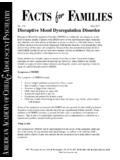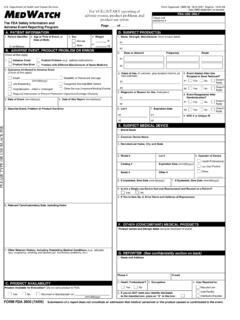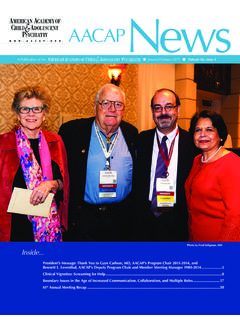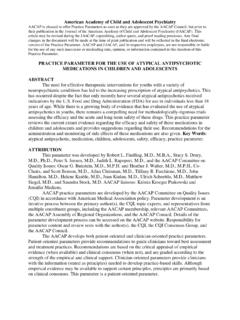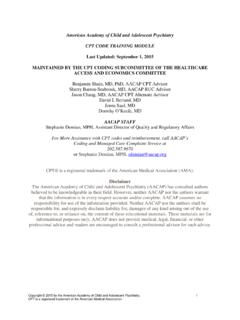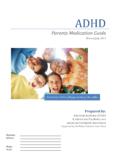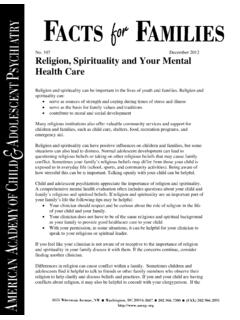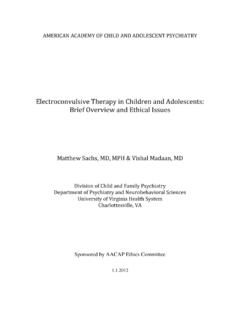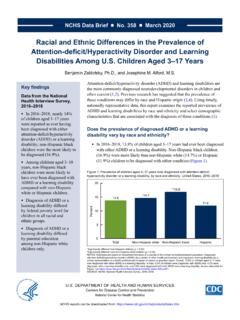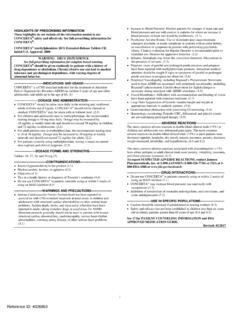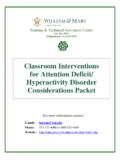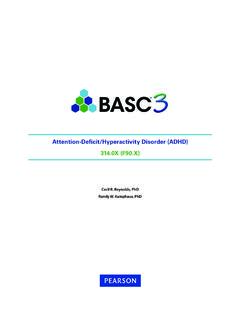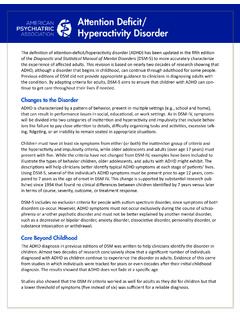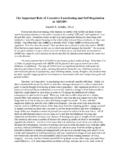Transcription of ODD - American Academy of Child and Adolescent …
1 ODD. A Guide for Families by the American Academy of Child and Adolescent Psychiatry Oppositional Defiant Disorder w w w . a a c a p . o r g eAACAP on Because childhood and Adolescent mental illnesses are real, common, and treatable ODD: A Guide for Families n ii Table of Contents What Is Oppositional Defiant Disorder (ODD)? 1. How Common Is ODD? 2 What Causes ODD? 3. What Are the Symptoms of ODD? 4. How Is ODD Diagnosed? 5. Can ODD Occur with Other Conditions? 6. Can ODD Be Prevented? 8. How Is ODD Treated? 8. How Long Does Treatment Typically Last?
2 12. Does ODD Improve over Time? 12. Which Therapies Have Been Shown Not to Work? 13. What Does the Future Hold? 13. References 14. Oppositional Defiant Disorder: A Guide for Families is adapted from the American Academy of Child and Adolescent Psychiatry's Practice Parameter for the Assessment and Treatment of Children and Adolescents with Oppositional Defiant Disorder. The AACAP Practice Parameter was written to aid clinicians, Child and Adolescent eAACAP on psychiatrists, physicians, and other healthcare professionals in the diagnosis and treatment of children with Because childhood and Adolescent ODD.
3 This guide was adapted from the AACAP Practice Parameter in 2009. mental illnesses are real, common, This publication is protected by copyright and can be reproduced with the permission of the American and treatable Academy of Child and Adolescent Psychiatry. 2009 The American Academy of Child and Adolescent Psychiatry, all rights reseved. ODD: A Guide for Families n 1. What Is Oppositional Defiant Disorder? Oppositional defiant disorder (ODD) is one of a group of behavioral disorders called disruptive be- havior disorders (DBD). These disorders are called this because children who have these disorders tend to disrupt those around them.
4 ODD is one of the more common mental health disorders found in children and adolescents. Physicians define ODD as a pattern of disobedi- ent, hostile, and defiant behavior directed toward authority figures. Children and adolescents with ODD often rebel, are stubborn, argue with adults, and refuse to obey. They have angry outbursts and have a hard time controlling their temper. Even the best-behaved children can be uncooperative and hostile at times, particularly adolescents, but those with ODD show a constant pattern of angry and verbally aggressive behaviors, usually aimed at parents and other authority figures.
5 The most common behaviors that children and adolescents with ODD. show are: Defiance Spitefulness Negativity Hostility and verbal aggression A mental health professional is often called upon if these behaviors create a major disturbance at home, at school, or with peers. Seeking treatment for children and adolescents suspected of having ODD is critical. This disorder is often accompanied by other serious mental health disorders , and, if left untreated, can develop into conduct disorder (CD), a more serious disruptive behavior disorder.
6 Children with ODD who are not treated also are at an increased risk for substance abuse and delinquency. Oppositional Defiant Disorder: A Guide for Families is adapted from the American Academy of Child and Adolescent Psychiatry's Practice Parameter for the Assessment and Treatment of Children and Adolescents with Oppositional Defiant Disorder. The AACAP Practice Parameter was written to aid clinicians, Child and Adolescent eAACAP on psychiatrists, physicians, and other healthcare professionals in the diagnosis and treatment of children with Because childhood and Adolescent ODD.
7 This guide was adapted from the AACAP Practice Parameter in 2009. mental illnesses are real, common, This publication is protected by copyright and can be reproduced with the permission of the American and treatable Academy of Child and Adolescent Psychiatry. 2009 The American Academy of Child and Adolescent Psychiatry, all rights reseved. ODD: A Guide for Families n 2. Some parents have trouble seeing defiant behaviors as a symptom of a mental disorder. They may want to wait to start treatment until the Child matures to see if he or she will grow out of it.
8 Also, it is sometimes difficult to distinguish between ODD and normal, independence-seeking behavior that shows up during the terrible twos and early teen years. However, there is evidence to suggest that early intervention and treatment will help a Child overcome ODD. Treatment also may prevent its progression into a more a serious mental health concern. Treatment usually consists of a combination of therapies, including behavioral therapy, parent training, and family therapy. Some children may benefit from medication as well. With treatment, children and adolescents can overcome the behavioral symp- toms of ODD.
9 They can learn techniques to manage their anger and develop new ways of coping with stressful situations. Treatment also can help parents learn better ways to discipline and techniques to reward good behavior. With treatment, children and adolescents with ODD can overcome their difficult behaviors and lead happier, more fulfilling lives. How Common Is ODD? There is a range of estimates for how many children and adolescents have ODD. Evidence suggests that between 1 and 16 percent of children and adolescents have However, there is not very much information on the prevalence of ODD in preschool children, and estimates cannot be ODD usually appears in late preschool or early school-aged children.
10 In younger children, ODD is more common in boys than girls. However, in school-age children and adolescents the condition occurs about equally in boys and Although the disorder seems to occur more often in lower socioeconomic groups, ODD affects families of all backgrounds. Oppositional Defiant Disorder: A Guide for Families is adapted from the American Academy of Child and Adolescent Psychiatry's Practice Parameter for the Assessment and Treatment of Children and Adolescents with Oppositional Defiant Disorder. The AACAP Practice Parameter was written to aid clinicians, Child and Adolescent eAACAP on psychiatrists, physicians, and other healthcare professionals in the diagnosis and treatment of children with Because childhood and Adolescent ODD.
